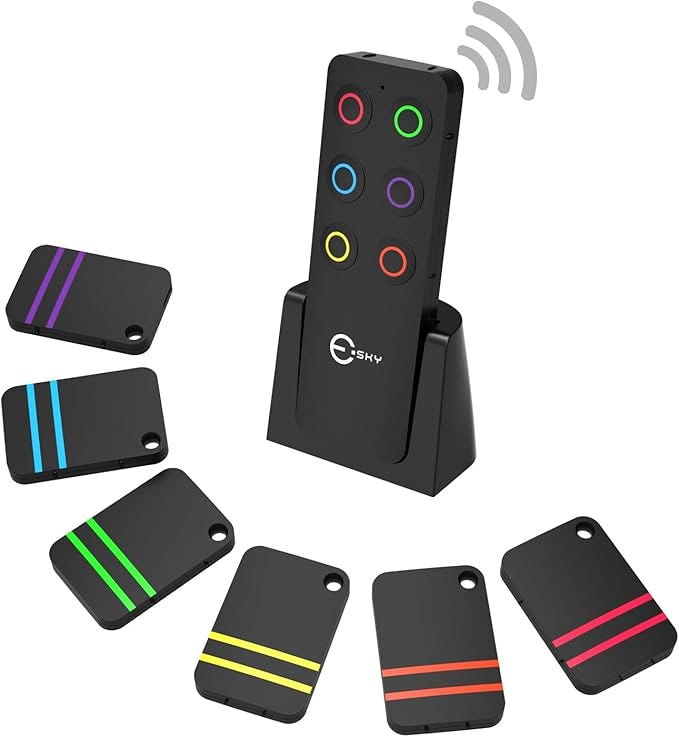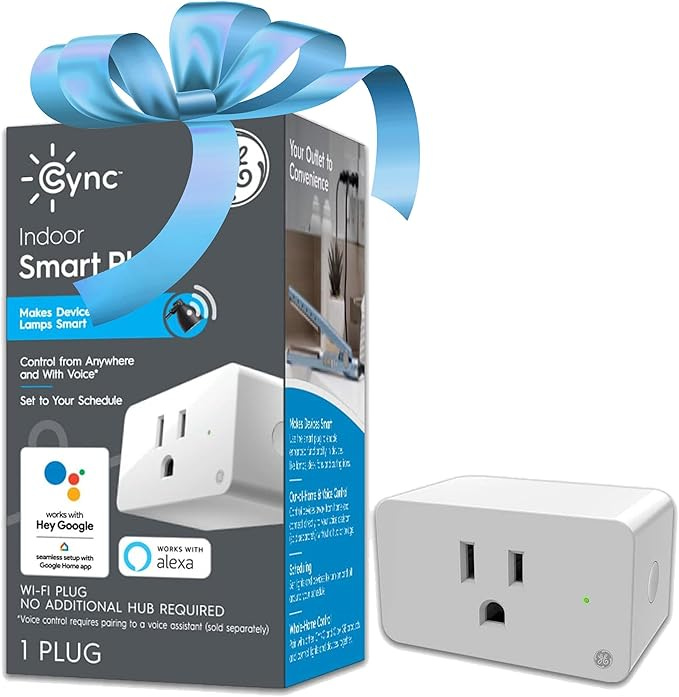Leverage The Slow Shopping "Trend" To Save More Money
Make this "trend" a permanent way to save more!
Here’s what to expect in this newsletter!
(P.S. If this newsletter is cut off in your email just visit our Substack!)
📰 Interesting financial news: Stay up to date on what’s happening in the economy.
📈 What’s popping in the stock market: The 411 on trending/interesting stock market news.
📝 This week’s main topic: What this newsletter’s title is about!
🥰 Team CGF’s Amazon favs: Affordable yet helpful Amazon finds.
📰 Interesting financial news
IRS to send 1 million taxpayers up to $1,400 in ‘special payments.’ How to know if you’re eligible. (CNBC)
Biden administration withdraws broader student loan forgiveness plans that were set to cancel debt for over 38 million borrowers. (Business Insider)
📈 What’s popping in the stock market
The Container Store files for bankruptcy. (Ticker Symbol: TCSG)
Reddit releases new AI chatbot to keep users “locked in”. (Ticker Symbol: RDDT)
Kay Jewelers parent Signet fails to ring up growth as lab-grown rocks sparkle. (Ticker Symbol: SIG)
📝 Main topic: Taking a permanent approach to the slow shopping trend

If impulse shopping is the devil on your shoulder, then slow shopping is the angel helping you to be wiser with your money!
Let’s be honest—how often have we bought something on a whim only to regret it later? Slow shopping is the antidote to that all-too-familiar cycle, helping us hit pause, think carefully, and make smarter choices with our spending.
The idea of slow shopping has been trending, especially after all the crazy holiday spending and we certainly think it’s a worthwhile and great permanent approach to take when it comes to how you spend your money.
What is slow shopping?
Slow shopping is a mindful approach to spending that focuses on saving money and avoiding unnecessary debt.
It’s being mindful and intentional with your purchases instead of buying things on impulse. By moving away from mass consumerism, slow shopping encourages quality over quantity and thoughtful decision-making. It helps you buy items that have purpose and value in your life.
Like other trends, such as underconsumption core and loud budgeting, this trend can be practical and helpful for all of us.
Whether you’re tackling financial goals or simply seeking a more intentional lifestyle, slow shopping is a habit worth embracing especially now in 2025.
That said, let’s break down this way of spending money and how it can help you stick to your budget!
How to apply slow shopping in the new year!
Slow shopping sounds great in theory, but how can it curb impulse spending? Here are key tips on how to leverage this approach to change your spending habits for good:
1. Avoid shopping as entertainment
We’ve all done it—scrolling through online stores or wandering the mall just to pass time. But let’s be real: shopping as entertainment often leads to unnecessary spending and buyer’s remorse.
Instead, try finding alternative ways to fill your time that bring more lasting satisfaction. Read a book, take a walk, pick up a creative hobby, or call a friend for a chat.
By replacing shopping with activities that enrich your life, you’ll not only save money but also build healthier habits that don’t rely on spending to feel good.
2. Plan out specific times to shop and with a list
Before buying anything, create a detailed list of what you truly need or want. This helps you avoid impulse purchases and focus on intentional spending.
Additionally, picking specific times and dates to shop will help you focus on what you need to buy. By giving yourself a clear intention, you are more likely to pick up items you need rather than buying whatever catches your eye.
You can plan your shopping days by choosing one day to browse and another to make a purchase. This way, you can research different options, compare prices, visit different stores, have time to think, and make the right purchase for your budget.
3. Set a shopping budget
One of the simplest yet most impactful strategies: setting a shopping budget. It’s not about depriving yourself; it’s about giving yourself a clear framework to make spending decisions.
Take a realistic look at your income and expenses, and decide how much you’re comfortable allocating to shopping each month. Then, stick to it. Think of it like a safety net—your budget keeps you from overspending while still giving you room to enjoy things you love.
Plus, budgeting is a fantastic way to build mindfulness around your money. When you know exactly how much you can spend, it’s easier to avoid the trap of impulse purchases that derail financial goals.
4. Avoid using credit cards or buy now pay later loans
Slowing down your shopping also means slowing down your credit card use.
We know it’s tempting and easy to buy things on credit. However, before you swipe, take a moment to consider your current debt situation. If you want to pay off debt, remember that adding to your debt total will only make the pay-off process longer.
5. Wait 24 hours aka the pause rule
One of the golden rules of slow shopping is waiting 24 hours. If you can go 24 hours without thinking about the item you were considering buying, it’s probably not meant for you.
Giving yourself a grace period helps you analyze your emotions and see if you were shopping to self-soothe. If you notice a lot of emotions coming up in this 24-hour waiting period, you can use the extra time to take care of yourself. Talk to a good friend, and spend some time in nature.
Once you regulate your nervous system, you may not need to buy that new bag after all.
6. Don’t get distracted by sales
Sale signs can trigger impulse purchases. I remember a time when seeing a 40% off sign would make me beeline straight to the sales rack.
However, one thing I had to learn the hard way was that sales are always happening, which means there will always be an opportunity to buy something for a fraction of the price.
Unless you’ve been waiting to buy a particular item at a reduced price, remember you don’t need to pull out your wallet every time you see a sale.
Shop the sale when you need to buy something; otherwise, it’s best to stay away.
7. Declutter before adding more
Before you hit “add to cart,” take a moment to evaluate what you already own. Decluttering is eye-opening because it often reveals items you’ve forgotten about, duplicates you don’t need, or things that aren’t serving you anymore.
Maybe you’ll find a sweater you haven’t worn in ages or rediscover a gadget tucked away in a drawer. By decluttering, you not only create physical space but also gain clarity on what truly brings value to your life.
It’s a great way to pause and ask, Do I really need more, or can I make use of what I already have? This simple step can save you money and help you shop more thoughtfully.
8. Shop with intention
Shopping with intention is all about pausing to reflect before making a purchase. Instead of grabbing something because it looks good in the moment or it’s on sale, take a step back and ask yourself: Why am I buying this? Does it align with my goals or my values?
For example, if your goal is to save for a vacation or pay off debt, that fancy kitchen gadget might not feel as important when you put it into perspective.
Shopping intentionally helps you focus on what truly adds value to your life and makes every purchase feel meaningful, not mindless.
9. Reflect on purchases regularly
Reflection is such a powerful tool, especially when it comes to your spending habits. Set aside time every few weeks or at the end of the month to look back at what you’ve bought.
Ask yourself: Was this purchase worth it? Do I still love it or use it?
If you notice patterns—like frequent impulse buys or items you regret—you can use that insight to make better decisions in the future.
Think of it as a mini self-check that helps you refine your shopping habits and ensure your money is going toward things that genuinely matter to you.
- - -
Slow shopping is a great way to save money, but it isn’t the only way to keep cash in your wallet.
If you’re looking to prioritize saving money in the new year, check out a savings challenge part of our many free courses.
Need more hands on help? Explore our one-on-one coaching options!

🥰 Team CGF’s Amazon Favs: Smart Gadgets to Simplify Your Life
Life is hard, but fortunately, technology can make things easier. If you’re looking for ways to simplify your life without spending a fortune, these gadgets are a lifesaver.
Bonus, these items make great gifts for anyone you’re struggling to find a gift for.
P.S. If you make a purchase we may earn a commission, this helps us grow!
1. Portable Charger

Smartphones can do almost everything, from making video calls to live streaming a football game. Yet the one thing they struggle to do is keep their batteries charged for the whole day.
To solve that problem, you can either carry your charger with you and hope the place you get to has an available outlet, or you can save time by having a portable charger.
This INIU slim portable charger is lightweight, around the same size as your phone, and has multiple charging ports to charge multiple devices fast.
Instead of sparingly using your phone because you’re afraid to waste the battery, use your phone freely, knowing you have the juice to charge it up.
2. Esky Key Finder + Wallet Tracker

Do you have trouble keeping up with your keys? Me too! I swear I know where I put them down, but every day, just as I’m about to leave, I frantically search behind every corner to find them.
Luckily for those of us who can’t keep up with our small and essential items, this Esky Key Finder/Wallet Tracker can help you locate your missing items within seconds.
How can this device perform miracles? Using sound technology, you attach a color-coded receiver to your commonly lost items. When your keys go missing, you push the corresponding colored button on a remote, emitting a distinct sound. Then, you follow the sound until you find your item.
You can attach the receivers to any commonly misplaced items, including wallets, TV remotes, phones, purses, and bags.
Imagine leaving the house when you want because you’re not losing time looking for a lost item - Glorious!
3. GE Smart WiFi Plug

If you have Google Home or Alexa, one of your favorite features is probably the voice command. What if you could use voice commands for other household items?
Imagine you’ve just sat on the couch wrapped in a blanket, all cozy and ready to watch a movie, and you realize you left the lamp on in the dining room. With this GE Smart WiFi Plug, all you have to do is give the command, and the light turns off!
Compatible with Google Home and Alexa, these smart plugs can turn your house into a bright house, and it’ll only cost you about the same price as a movie ticket.





